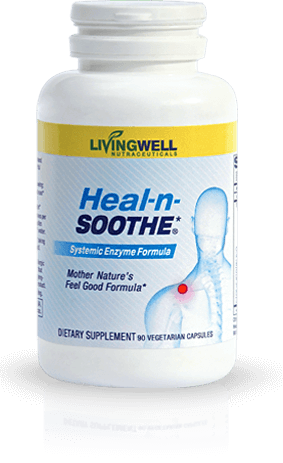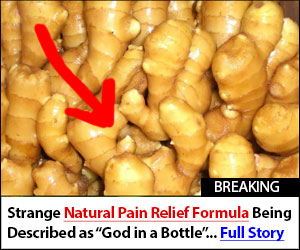What do cancer, heart disease, and arthritis have in common?
As it turns out, they all involve a “sticky” protein called fibrin. You see, fibrin is a double-edged sword. It’s a natural protein produced in the liver that circulates throughout the bloodstream.
One of the main functions of fibrin is to help form blood clots when you sustain an injury. In the short term, this is crucial for healing and survival. After all, if you sustained a cut and your blood couldn’t clot, you’d bleed out.
But here’s where things can go wrong. Under normal circumstances, once an injury is healed, your body releases enzymes to dissolve that fibrin clot. But thanks to aging and a variety of other factors, this fibrin breakdown doesn’t always happen.
And when too much fibrin sticks around for too long, that can trigger inflammation. And as you may know, chronic inflammation is linked to almost every major disease imaginable.
In fact, according to a recent study conducted at the University of Geneva in Switzerland—fibrin has been linked to cancer, heart disease, and arthritis.
Fibrin and Cancer
Researchers have discovered cancer cells can also produce fibrin. As we just established, too much fibrin can lead to inflammation. And increased inflammation can promote cancer progression.
But that’s not the only way that fibrin can fuel cancer growth. Scientists also discovered that fibrin can “hide” cancer cells from the immune system. And if your immune system can’t see the cancer cells, then it can’t get rid of them either. For this reason, some experts refer to fibrin as the “death cloaking” protein.
Fibrin and Heart Disease
The link between fibrin and heart disease is more straightforward. Like we mentioned earlier, fibrin protein is a major component of blood clots. This includes blood clots in the blood vessels of your heart too. If a blood clot forms that blocks too much blood and oxygen from reaching your heart—that can lead to deadly heart complications.
Fibrin and Arthritis
This one often surprises people. So if you’re struggling with awful joint pain, you’ll want to pay close attention to this section.
It’s easy to picture blood flowing into and pumping out of your heart. But blood is constantly circulating through all parts of your body, including your joints. Your knees, your hips, your spine—you name it.
When you sustain an injury or damage to your joints, they need this soothing blood flow to heal. But if fibrin is clogging up the blood vessels of your joints…it deprives your joint tissues of vital oxygen and nutrients.
This lack of oxygen and nutrients can lead to even more damage, inflammation, and of course, joint pain.
If traditional solutions aren’t giving you the relief you need—there’s a good chance this fibrin buildup could be the culprit.
Because surprise surprise, the usual options don’t address this fibrin buildup problem.
How to Dissolve Excess Fibrin and Soothe Joint Pain
Fortunately, you now have a natural option that dissolves this fibrin buildup and delivers the pain relief you deserve.
It’s called Heal-n-Soothe®. Heal-n-Soothe® is our high quality nutritional formula that contains an army of enzymes that dissolve excess fibrin on contact.
Once this extra fibrin is cleared from your joint tissues, you’ll enjoy a soothing rush of blood, oxygen, and relief. This means goodbye aches and stiffness.
And by the way, we’ll send you a bottle of Heal-n-Soothe® to try out today completely FREE.
Supplies are limited, so click the link below to claim your FREE bottle of Heal-n-Soothe®.
⇒Click Here to Claim Your FREE Bottle of Heal-n-Soothe® Now!
Written By: Updated: June 6,2023



Lower+disk+has+disintegrated+and+the+bones+rub+together+and+I+have+cmt+so+I+have+no+myleen+shief+to+protect+my+nerve please help explain to me what I should be saying to my doctor for help
Brian, We explain everything you need to know in this book:
https://losethebackpain.com/products/7-day-back-pain-cure-book
P.S. It is our opinion that once you read the book, you will know more about resolving back pain then your Doctor.
Thanks
Steve